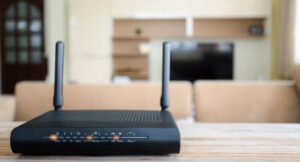Satellite communication services are unlikely to pose threat to telecom operators’ home broadband and mobile businesses due to their higher price points and inconsistent speeds, analysts have said.
Satcom players are unlikely to become mainstream in India in the medium term, they said, citing global trends. The Telecom Regulatory Authority of India (TRAI) released the satcom spectrum recommendations on May 9.
The primary constraints to large-scale broadband adoption in India — inadequate last-mile fibre and costly right of way (RoW) — are now being addressed through the 5G Fixed Wireless Access (FWA) services rolled out by Airtel and Reliance Jio, Axis Capital said in a note.
“With the fibre constraints largely addressed by FWA, and considering the premium pricing and costly Customer Premises Equipment (CPE) of satcom for what is essentially high-speed data connectivity, we do not expect satellite-based broadband services to become mainstream in India in the medium term, as has been the case globally,” the note, reviewed by Moneycontrol, said.
India’s broadband subscriber base, including fixed broadband and 5G-based FWA, stood at 46.4 million as of December.
Elon Musk’s Starlink had just over 5.4 million subscribers globally as of March 2025.
According to TRAI, telecom operators’ capacity in the mid-band spectrum (3300 MHz) can reach approximately 170 Tbps or more, compared to just 0.6–3 Tbps for satcom services.
“…telcos are likely to allocate the majority of this capacity to mobile services, and data demand on FWA — given its broadband-like usage — is expected to be significantly higher than that for mobile. However, this can be offset by enhancing capacity using millimetre wave spectrum,” the brokerage said.
Terrestrial networks deliver faster broadband speeds, as satcom requires the launch of additional satellite constellations, analysts said.
Increasing capacity at a location is not feasible with satcom, since satellite capacity is spread across a wide area.
‘Complementary, not competitive service’
Axis Capital pegged the average terminal cost for satcom at Rs 30,000, which must be purchased by the user, compared to a refundable security deposit of Rs 2,000–2,500 for FWA connections.
“The average satcom plan is about twice as expensive as a standard broadband plan in countries where the service is available,” the brokerage said.
TRAI chairman Anil Kumar Lahoti, too, said the regulator expects satcom to remain a complementary service to terrestrial FWA in the near to medium term rather than a competitor. He rejected claims that satcom would compete directly with terrestrial mobile networks.
This expectation stems from satcom’s limited capacity, slower ability to scale, higher pricing, and costly hardware.
“A city like Delhi has around 5 million broadband connections, whereas a single satellite constellation can support only about 20,000 users,” Lahoti said. “This disparity will continue for at least the next five years. Satellite services will remain complementary —not competitive — to terrestrial networks.”
Some industry observers and satellite players said TRAI’s proposed additional spectrum charges for urban areas could make satcom unaffordable in India’s most lucrative telecom markets.
A senior executive with a satellite service provider said the recommendation favours mobile broadband providers, granting them a strategic advantage over satellite players in urban areas.
“While satellite has been primarily used globally to offer connectivity in rural and deep rural areas where deployment of any kind of fixed infrastructure is not commercially viable, the higher spectrum charges, especially in urban areas, do put the satellite providers on a back foot,” Ashwinder Sethi, partner at Analysys Mason, told Moneycontrol.
“We believe 5G FWA will be the focus of mobile operators in sub-urban and rural areas, while satellite providers will focus on rural and deep rural areas, as satellite has limited capacity at the moment regarding a number of subscribers that can be supported,” Sethi said.
While 5G FWA will be the focus of mobile operators in sub-urban and rural areas, satellite providers will look at “rural and deep rural areas”, as at the moment, satellite capacity to support subscribers is limited, Sethi said.
According to an analysis by Analysys Mason, the proposed spectrum charges for satellite services at 4 percent of AGR are on the higher side when compared to mobile services, where the DoT does not levy any SUC for 5G spectrum bought in the 3.5GHz and 26GHz bands. This implies that satellite service providers will pay spectrum charges of 4 percent of AGR, while the mobile (including FWA) service providers will be charged at less than 1.5 percent on a blended basis (across different spectrum bands).
“Furthermore, the additional charge of Rs 500 per annum per subscriber in urban areas for NGSO-based FSS (fixed satellite service), takes the spectrum charges even higher for satellite providers,” Sethi said.
Additional spectrum charges would make satellite broadband unaffordable and non-competitive in urban markets, giving mobile broadband players a clear edge in India’s most profitable telecom zones.
TRAI recommended that satellite communication companies — Starlink, Eutelsat-OneWeb, and the Jio-SES joint venture — pay 4 percent of their Adjusted Gross Revenue (AGR) as spectrum usage charges, aligning with the current framework for VSAT providers.
Following the recommendations, the department of telecommunications (DoT) has begun finalising the satellite spectrum allocation rules, which would be issued under the new Telecommunications Act, sources said. A draft seeking feedback would also be released soon.
Industry said the rules would allow administrative allocation of satellite spectrum. However, pricing decisions will require cabinet approval. The Digital Communications Commission (DCC), the DoT’s top decision-making body, will review TRAI’s proposals before presenting them to the cabinet for pricing approval, they said. MoneyControl

Leave a Reply